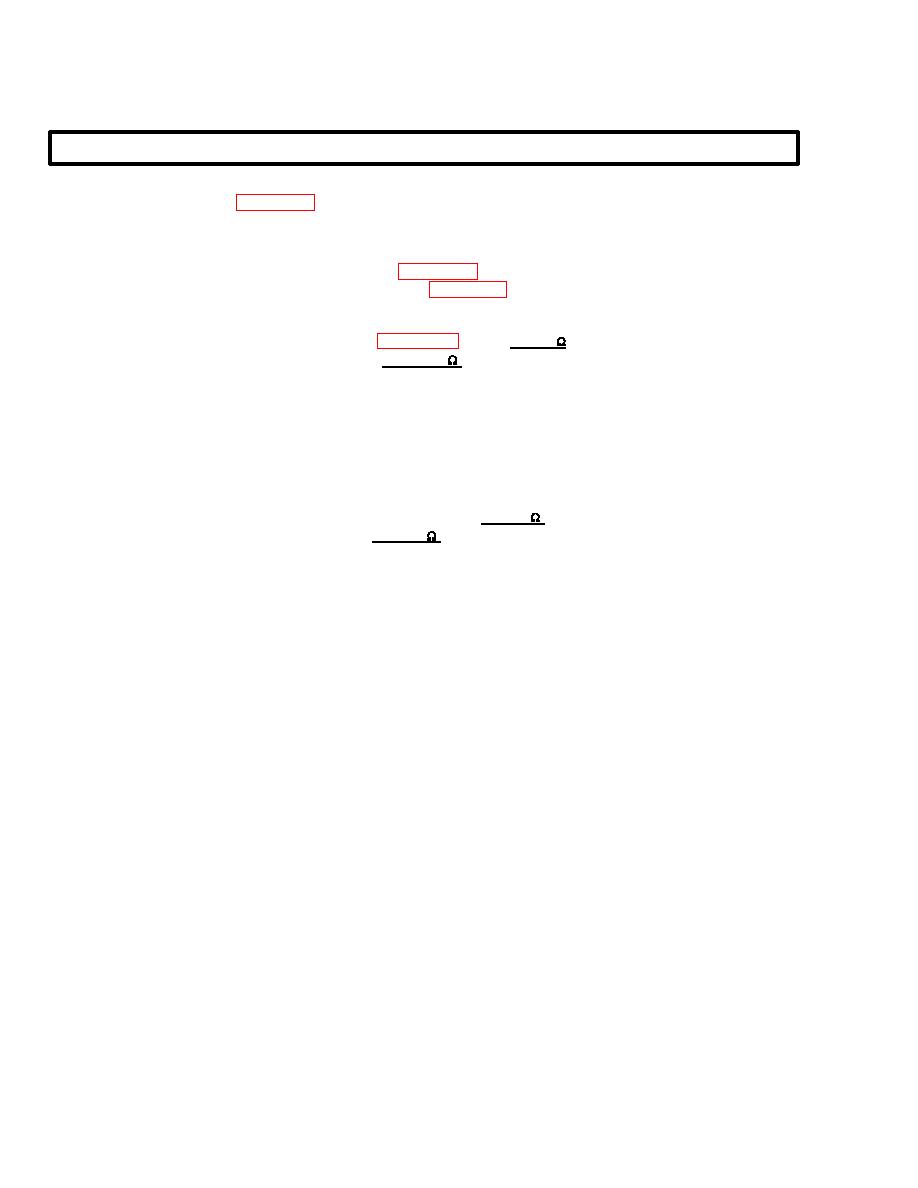
TM 1-2840-252-23-3
G-67
MOVING ECL TO STOP CAUSES INCREASE IN ENGINE POWER EXPANDED INSTRUCTIONS
Refer to numbered steps in figure 153.
Step 2.
Disconnect PL3 and ECL quadrant connectors to check pins and sockets.
Step 3.
Follow instructions as required in figure 159, except do not check system for original fault after any
repairs are made. After all checks from figure 159 are completed, go to step 4 of this procedure.
Step 4.
Set ECL to STOP. With PL3 disconnected, check resistance of ECL quadrant (excitation) at harness
PL3 connector sockets h and j (figure 202). Limit is35 - 42 . Check resistance of ECL quadrant (signal)
at sockets EE and DD. Limit is 90 - 102 . Monitor resistance of ECL quadrant (interlock discrete) at
sockets f and LL while moving ECL from STOP to GROUND to FLIGHT. Limits are defined in table
below. Monitor resistance of ECL quadrant (gain discrete) at sockets MM and LL while moving ECL from
STOP to GROUND to FLIGHT. Limits are as defined in table below. (NOTE: Gain discrete resistance is
not checked at GROUND because switch can be open or closed at that point.)
Step 5.
Refer to manufacturer's procedure for checking operation of ECL quadrant.
Step 7.
Set ECL to STOP. With ECL quadrant connector disconnected, check resistance of ECL quadrant
(excitation) at quadrant pins 1 and 2. Limit is 35 - 40 . Check resistance of ECL quadrant (signal) at
quadrant pins 3 and 4. Limit is 90 - 100 . Monitor resistance of ECL quadrant (interlock discrete) at pins
11 and 12 while moving ECL from STOP to GROUND to FLIGHT. Limits are as defined in table below.
Monitor resistance of ECL quadrant (gain discrete) at pins 5 and 11 while moving ECL from STOP to
GROUND to FLIGHT. Limits are as defined in table below. (NOTE: Gain discrete resistance is not
checked at GROUND because switch can be open or closed at that point.)
Step 8.
Refer to manufacturer's procedure for dia nosing and replacing harness.
g
Step 13.
Refer to manufacturer's procedure for diagnosing and replacing harness or ECL quadrant.
Step 14.
Refer to manufacturer's procedure replacing ECL quadrant.
Step 17.
Refer to manufacturer's procedure for diagnosing and replacing ECL quadrant.
G-157

